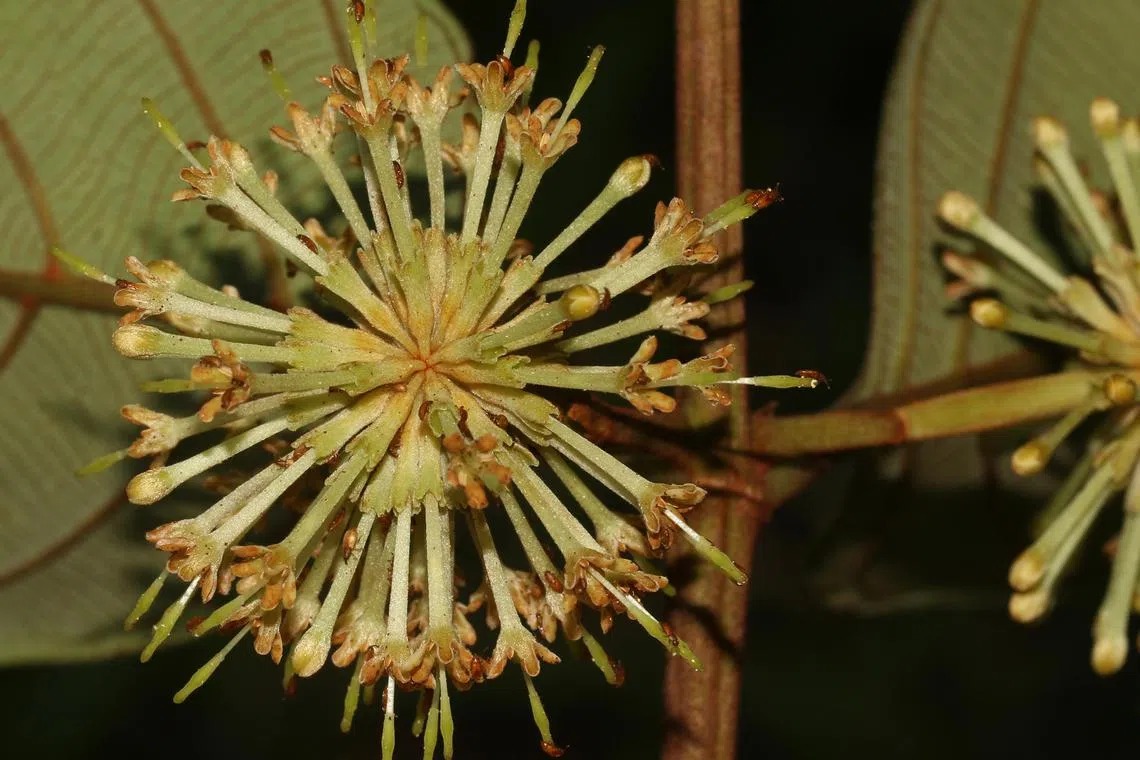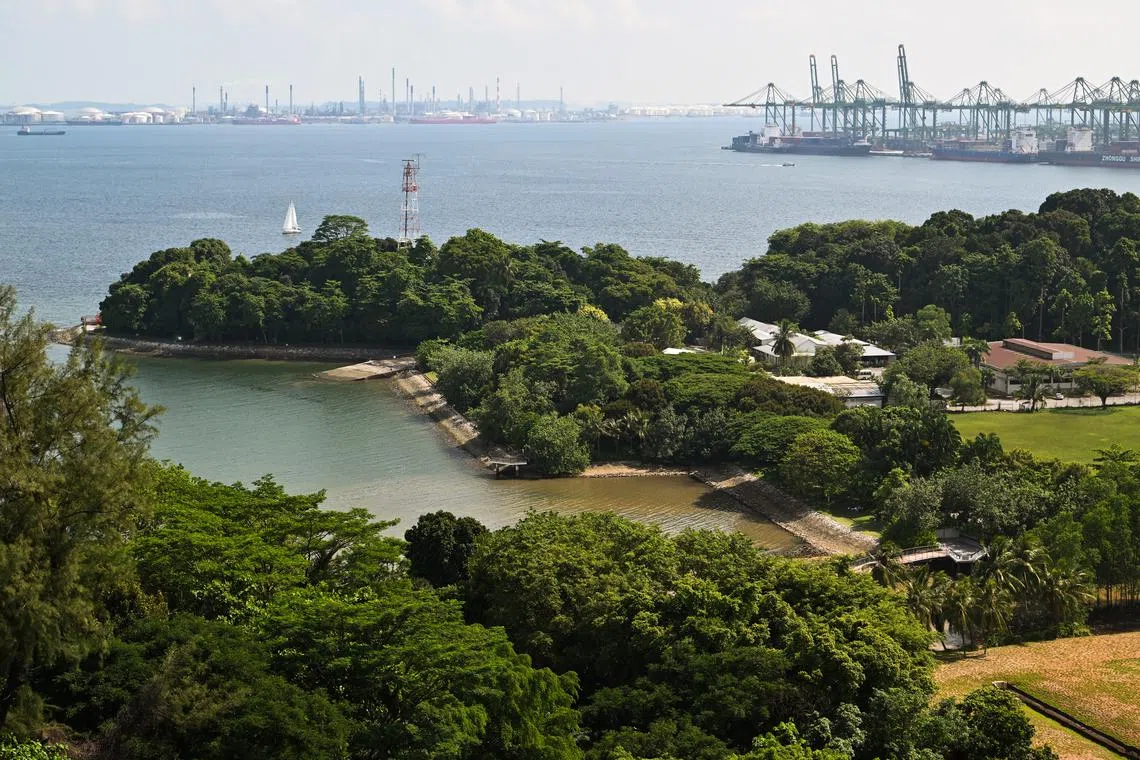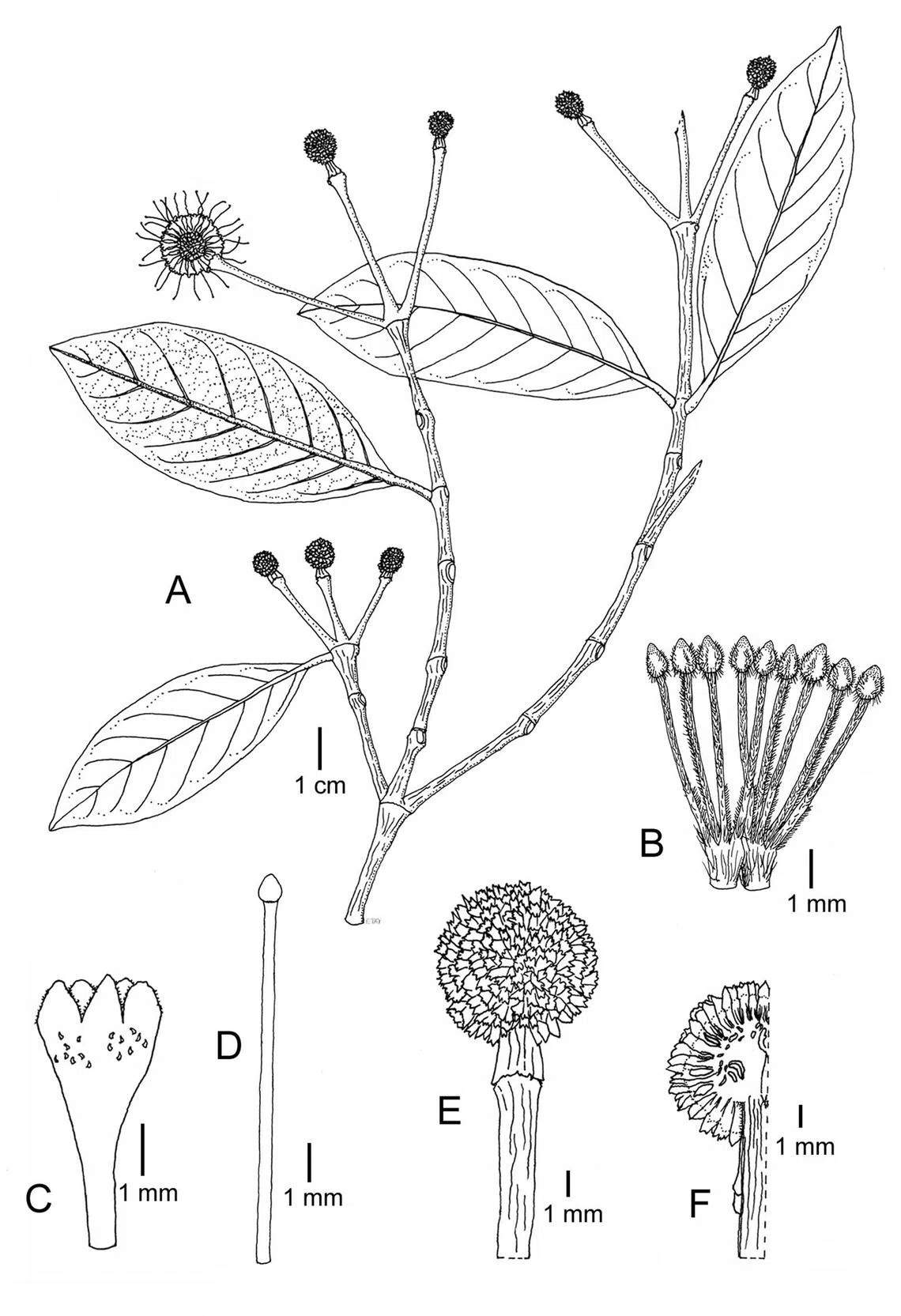Why a small city-state like Singapore continues to discover rare plants
Sign up now: Get ST's newsletters delivered to your inbox

The Uncaria attenuata was last seen in the 19th century and therefore thought to be nationally extinct. It was found in 2022.
PHOTO: NPARKS
Follow topic:
SINGAPORE – When an Uncaria climber bloomed in 2022, three National Parks Board (NParks) staff patiently manoeuvred a 10m-long pruner to obtain tiny winged seeds from the notoriously inaccessible plant.
Their prize: the eventual rediscovery of the Uncaria attenuata, which was last seen in the 19th century and therefore thought to be nationally extinct.
The woody member of the coffee family is just one of more than 320 plant species rediscovered or found in the city-state for the first time in the last 14 years, said researchers from NParks and the Royal Botanic Garden in Edinburgh, Britain.
Their study was published online in scientific journal Plants, People, Planet on Jan 16.
The high number of new records and rediscoveries in Singapore is surprising because its flora is well studied, the study’s lead author Louise Neo told The Straits Times.

National Parks Board staff using a 10m-long pruner to obtain tiny winged seeds.
PHOTO: NPARKS
Dr Neo, a researcher at the Singapore Botanic Gardens, said: “The findings show that there is still time to find and prevent the extinction of rare plants in a densely populated city like Singapore, where most of our forest cover has actually been lost since the early 1900s.”
The report focused on vascular plants, or flora with systems for transporting nutrients and water, as this group of plants has been well documented over the past few decades.

The recent plant rediscoveries and finds largely took place in nature reserves with the largest tracts of native species dominated forest.
PHOTO: ST FILE
Like the Uncaria, other recent plant rediscoveries and finds largely took place in nature reserves with the largest tracts of native species-dominated forest: the 163ha Bukit Timah Nature Reserve and the Central Catchment Nature Reserve, which spans over 3,000ha.
Said Dr Neo: “The numbers show that remaining fragments of original forests that already have a long history of protection can actually serve as an oasis or refuge for biodiversity.”
The Bukit Timah Nature Reserve, which has the biggest patch of virgin forest in Singapore, was designated a reserve in the late 19th century. Although the Central Catchment Nature Reserve was not gazetted until much later, most of it was protected because of an agreement at the time to keep vegetation along the streams and water bodies, which included MacRitchie Reservoir.
The highest number of rare species found came from the largest and least disturbed patch of forest in Bukit Timah Nature Reserve. It logged 44 rediscoveries and 22 species new to Singapore.
This was followed by the last substantial area of freshwater swamp forest, the Nee Soon Swamp Forest in the Central Catchment Nature Reserve, with 43 rediscoveries and 17 new records.
A handful of rediscoveries were from regenerating secondary forests and parks buffering these reserves, like Windsor Nature Park in the Upper Thomson area. This shows how highly disturbed fragments of forests can still support some rare native species, the researchers said.
Secondary forest refers to vegetation that has sprung up following the complete removal of an earlier forest.
With most of these rediscovered plant species being classified as critically endangered in Singapore, conservation action is clearly needed, the researchers said.

One of the rediscovered plant species is the Jasminanthes maingayi, a rare rainforest climber with milky trumpet-shaped flowers.
PHOTO: NPARKS
Among these plants is the Jasminanthes maingayi, a rare rainforest climber with milky trumpet-shaped flowers, which was found by a student in the Central Catchment Nature Reserve in 2012, over 120 years after it was last seen. It was rediscovered because a fallen tree had lowered parts of the climber, which grew high up in the forest canopy, allowing for flowers to be collected and identified.
At the time, the climber was the only mature individual of its kind known to exist in the wild here.
To the researchers’ surprise, such climbing plants and trees were well represented among both the rediscoveries and new finds.
This was unexpected because trees are often assumed to be better studied and less likely to be overlooked, they said.
Possible reasons cited include misidentification of earlier specimens, as reproductive material like seeds for many large tree and canopy climber species is harder to come by. It is also difficult to collect samples from tall trees.
Leafing through pre-existing collections formed a significant part of logging new records for plant species, with taxonomic studies accounting for 56.8 per cent of records, the researchers wrote.

The world’s only known specimen of Neonauclea kranjiensis, collected from Kranji in 1894, was officially identified as a species new to science by NParks’ researchers only in 2018.
PHOTO: NPARKS
For example, the world’s sole known specimen of Neonauclea kranjiensis, collected from Kranji in 1894, was officially identified as a species new to science by NParks’ researchers only in 2018. Since no living specimens have been recorded in the last 130 years, it has also been deemed globally extinct.
Overall, the researchers found that there are likely to be more plants left to be rediscovered, as such finds have not tapered off. On average, about 12 species have been rediscovered per year.
Singapore Botanic Gardens senior researcher Chong Kwek Yan, who co-authored the study, said: “As we develop a more complete knowledge of different species, we have a more complete knowledge of the ecosystem.
“For species that can be found only here, we become responsible to protect its only known specimens.”
One such plant species successfully rejuvenated by NParks’ botanists is the tiger orchid, which has striking brown and yellow patterns that resemble a tiger’s stripes. It was last seen in the wild in 1924, and is now grown by NParks around Singapore.

The tiger orchid was last seen in the wild in 1924.
PHOTO: NPARKS
The research shows that NParks cannot slacken on its conservation efforts, and needs to continue to train workers who can spot and differentiate plant species in the wild, Dr Chong added.
Conservation ecologist Stuart Pimm, one of the world’s leading experts in present-day extinctions, said the study shows that a densely populated city can remain home to a wide variety of species by protecting spaces where they are found.
In particular, the paper shows that there is enough nature left in Singapore for botanists and others to find species that have not been seen before or, in some cases, have not been chanced upon before, said Professor Pimm, who teaches at Duke University’s Nicholas School of the Environment.
He added: “Singapore has gone to considerable trouble to make these areas well protected and readily accessible in ways that do not damage them.
“That’s a lesson for other cities in Asia!”


